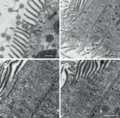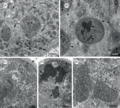| Cepedea | |
|---|---|
 | |
| Cepedea longa | |
| Scientific classification | |
| Domain: | Eukaryota |
| Clade: | Diaphoretickes |
| Clade: | Sar |
| Clade: | Stramenopiles |
| Phylum: | Bigyra |
| Class: | Opalinea |
| Order: | Opalinida |
| Family: | Opalinidae |
| Genus: | Cepedea |
Cepedea is a genus of opalines within the Stramenopiles.
Examples are Cepedea virguloidea [1] and Cepedea longa. [2] A detailed list of all reported Cepedea species was compiled by Li et al (2017). [2]


